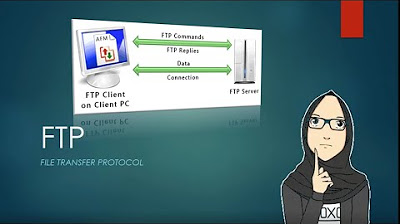What is Syslog ? Easy to understand
Summary
TLDRThis video provides an introduction to syslog, a standard protocol used for sending system log and event messages to a centralized server. Syslog helps monitor and analyze logs from various devices like routers, switches, and servers. It is commonly used in UNIX/Linux systems but can also be configured on Windows with third-party tools. The syslog message structure includes a priority value, facility, and severity codes to categorize and prioritize events. The video highlights syslog's importance in managing large amounts of log data and its ability to support real-time monitoring and alerting, especially when paired with tools like SolarWinds Security Event Manager.
Takeaways
- 😀 Syslog stands for System Logging Protocol, used to send system log and event messages to a syslog server for centralized monitoring.
- 😀 It is widely supported on network equipment (routers, switches, firewalls) and UNIX/Linux systems, as well as web servers like Apache.
- 😀 Syslog is not installed by default on Windows systems, but can be used through third-party utilities or configurations.
- 😀 Syslog helps centralize event data from various devices, making it easier for administrators to monitor and analyze system logs.
- 😀 The protocol primarily uses UDP on port 514, but can be configured to use other ports or TCP (port 1468) for confirmed message delivery.
- 😀 Syslog packet transmission is asynchronous, meaning messages are sent without waiting for confirmation.
- 😀 Syslog messages consist of three parts: PRI (priority value), HEADER (identifying information), and MSG (the event message).
- 😀 The PRI value is calculated using two numeric values: the facility value (categorizing the type of message) and the severity value (categorizing importance).
- 😀 The lower the PRI value, the higher the priority of the syslog message.
- 😀 Syslog messages are sent to a configured syslog server, but the protocol does not support server requests for log data.
- 😀 Syslog can generate a large volume of messages, so it's crucial for syslog servers to filter and react to incoming data efficiently.
- 😀 Security Event Manager (SEM) can process and normalize syslog data, providing real-time log and event correlation to detect security breaches.
Q & A
What is syslog and what is its primary function?
-Syslog is a standard protocol used to send system log or event messages to a specific server, known as a syslog server. Its primary function is to centralize logs from various devices, such as routers, switches, and firewalls, for monitoring and review.
Which devices commonly use syslog?
-Syslog is used on network equipment like routers, switches, firewalls, as well as on Unix/Linux-based systems and web servers such as Apache. It is also used on printers and scanners.
Why is syslog not installed by default on Windows systems?
-Windows systems use their own event logging system, known as the Windows Event Log, instead of syslog. However, syslog data can be forwarded using third-party utilities or other configurations.
How does syslog help with managing logs from multiple devices?
-Syslog helps by centralizing logs from various devices into a single server. This prevents the impracticality of monitoring logs from multiple devices separately and makes it easier for administrators to analyze and manage them.
What is the difference between syslog's UDP and TCP transmission?
-Syslog traditionally uses UDP on port 514 to transmit messages, which is fast but does not guarantee message delivery. Some devices can use TCP on port 1468 to ensure confirmed message delivery, providing a more reliable transmission.
What are the key components of a syslog message?
-A syslog message consists of three parts: the PRI (priority value), header (identifying information), and the message itself (event or log data).
How is the PRI value in a syslog message calculated?
-The PRI value is calculated by multiplying the facility value (which categorizes the type of message) by 8 and then adding the severity value (which indicates the importance of the message).
What are facility and severity values in syslog messages?
-The facility value categorizes the type of message or which system generated the event, with 15 predefined categories. The severity value indicates the importance of the message, with a scale from 0 to 7, where lower values represent higher severity.
What role does a syslog server play in managing log data?
-A syslog server receives syslog messages from various devices and must filter and process them efficiently due to the large volume of data. The server helps in analyzing logs and can trigger alerts or actions based on predefined or custom rules.
How does SolarWinds Security Event Manager (SEM) help in log management?
-SolarWinds SEM processes and normalizes log data before storing it in a database. It provides real-time log and event correlation, enabling automatic alerts for security breaches and other critical events.
Outlines

هذا القسم متوفر فقط للمشتركين. يرجى الترقية للوصول إلى هذه الميزة.
قم بالترقية الآنMindmap

هذا القسم متوفر فقط للمشتركين. يرجى الترقية للوصول إلى هذه الميزة.
قم بالترقية الآنKeywords

هذا القسم متوفر فقط للمشتركين. يرجى الترقية للوصول إلى هذه الميزة.
قم بالترقية الآنHighlights

هذا القسم متوفر فقط للمشتركين. يرجى الترقية للوصول إلى هذه الميزة.
قم بالترقية الآنTranscripts

هذا القسم متوفر فقط للمشتركين. يرجى الترقية للوصول إلى هذه الميزة.
قم بالترقية الآنتصفح المزيد من مقاطع الفيديو ذات الصلة
5.0 / 5 (0 votes)






